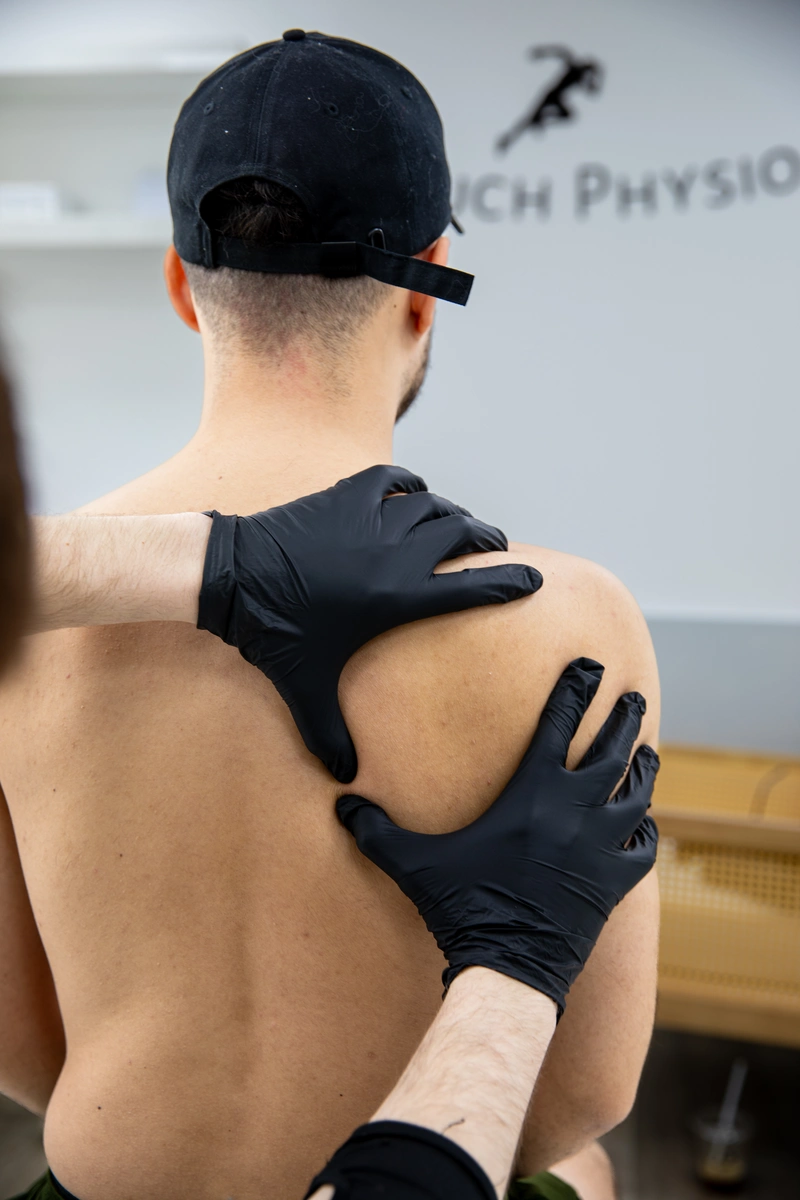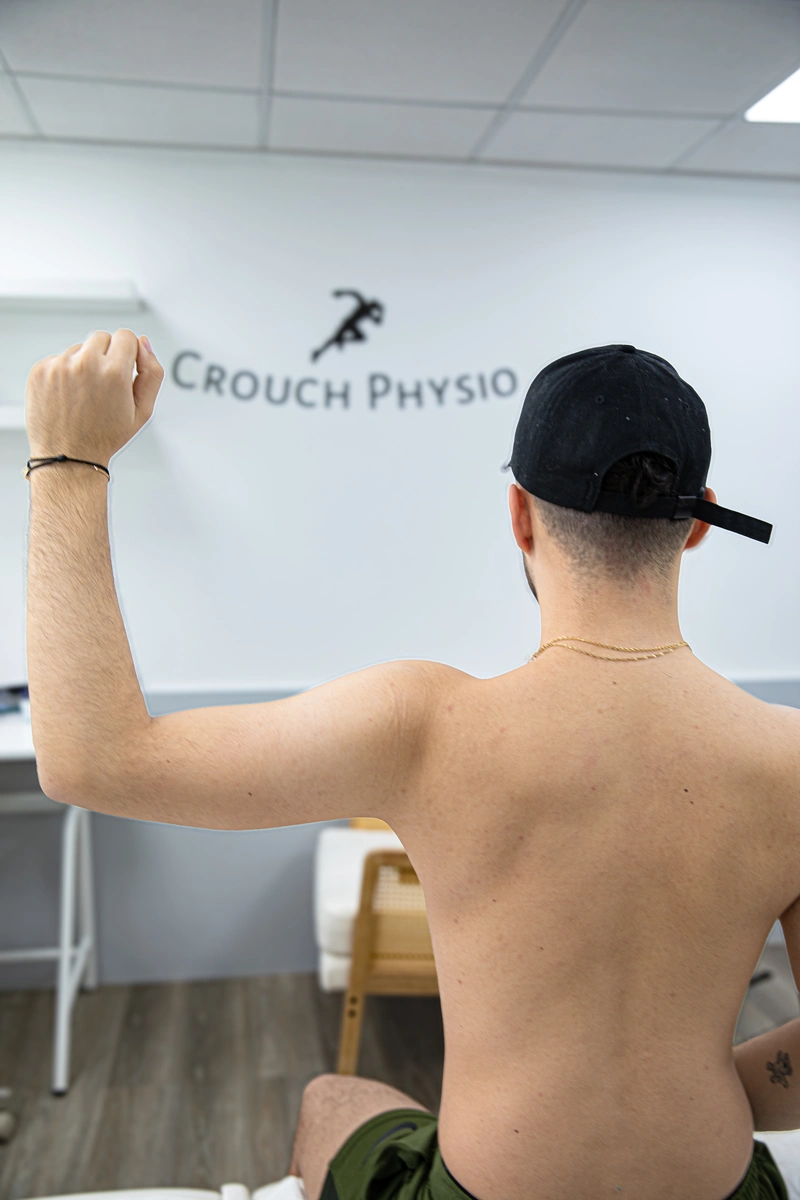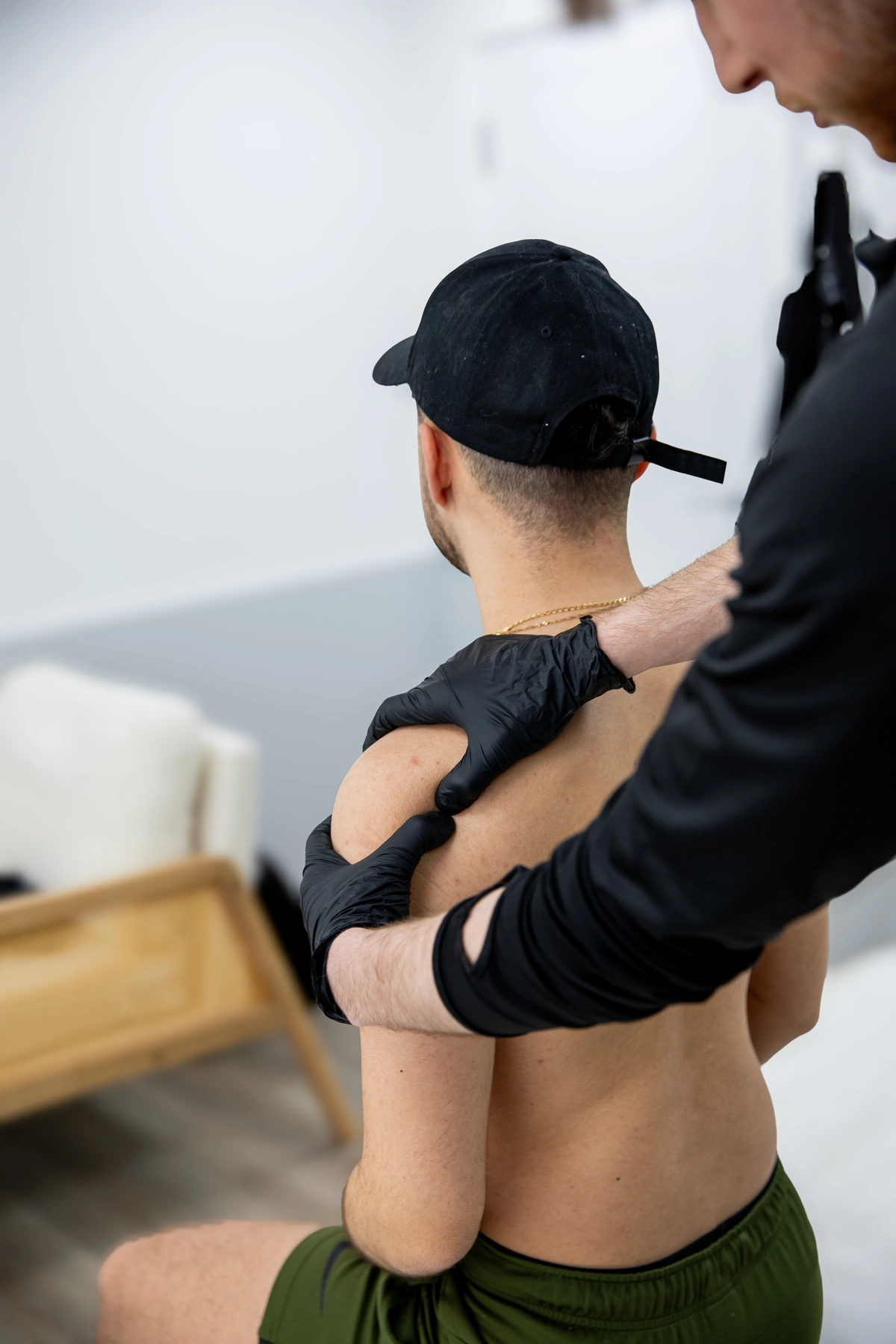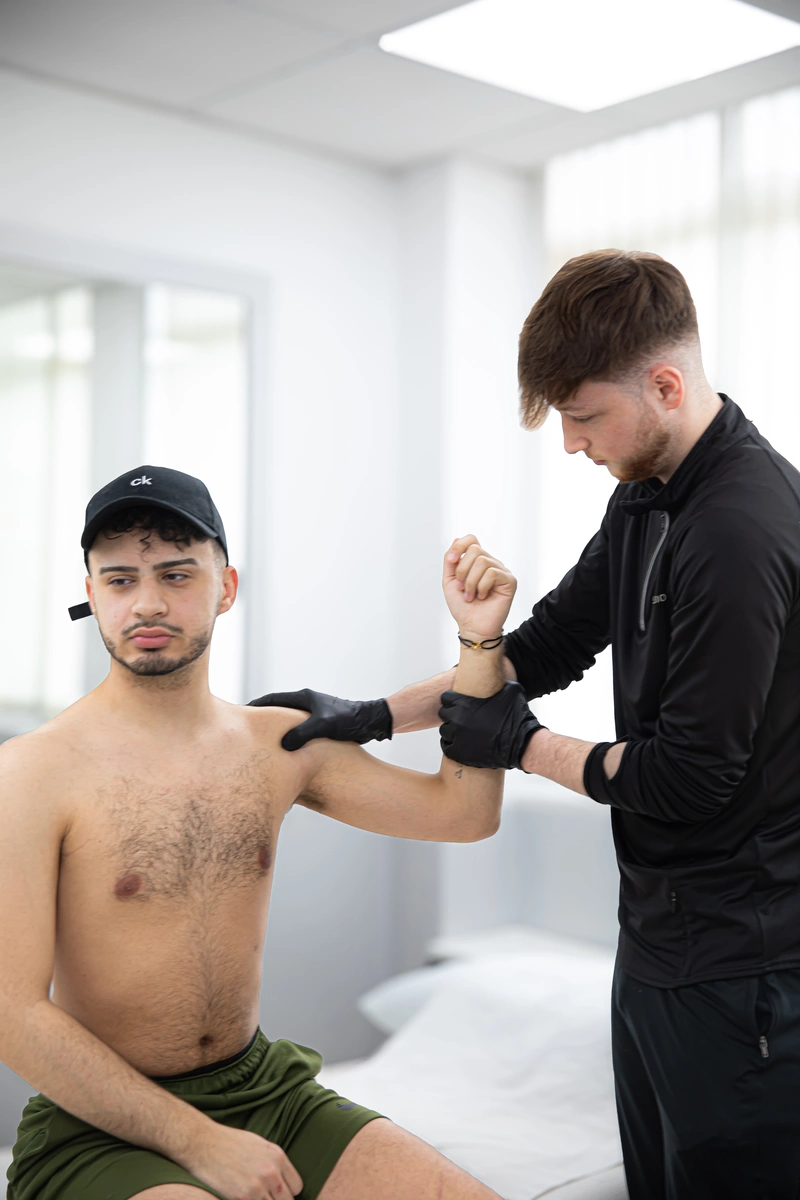Frozen Shoulder

What is frozen shoulder?
Frozen Shoulder, or adhesive capsulitis, is a condition characterised by pain and stiffness in the shoulder joint. It typically progresses through three stages: freezing, frozen, and thawing, though not all patients go through all stages. The exact cause of frozen shoulder is not fully understood, but it often occurs following shoulder trauma, surgery, or prolonged immobilisation. It can also be associated with certain medical conditions such as diabetes, thyroid disorders, or cardiovascular disease.
Patient Presentation and Symptoms
- Freezing Stage: Patients experience a gradual onset of shoulder pain that worsens over time. They may also notice a decrease in the range of motion of their shoulder joint, especially while performing overhead activities or reaching behind the back.
- Frozen Stage: The pain may decrease during this stage, but the stiffness in the shoulder becomes more pronounced. Patients often have difficulty with everyday activities such as dressing, combing hair, or reaching for objects.
- Thawing Stage: The shoulder gradually begins to regain mobility, and pain diminishes. However, this stage can last several months to years before full recovery is achieved.


Diagnostic Tests
- Physical Examination: A thorough physical examination by a healthcare professional, such as a physiotherapist or orthopaedic doctor, can help assess the range of motion, strength, and stability of the shoulder joint.
- Imaging Studies: X-rays may be ordered to rule out other conditions such as arthritis or fractures. MRI (Magnetic Resonance Imaging) or ultrasound may also be used to visualise soft tissue structures and assess the extent of inflammation and adhesive capsulitis.
Treatment Methods
- Physical Therapy: Physiotherapy plays a crucial role in the management of frozen shoulder. Therapeutic exercises focused on improving range of motion, stretching, and strengthening the muscles around the shoulder joint can help alleviate stiffness and pain.
- Manual Therapy: Techniques such as joint mobilisation and soft tissue massage performed by a physiotherapist can help improve shoulder mobility and reduce pain.
- Modalities: Heat therapy, cold therapy, ultrasound, or electrical stimulation may be used to alleviate pain and promote tissue healing.
- Corticosteroid Injections: In some cases, corticosteroid injections into the shoulder joint may be recommended to reduce inflammation and alleviate pain.
- Hydrodilatation: This procedure involves injecting a sterile fluid into the shoulder joint to stretch the capsule and improve range of motion.
- Surgery: In severe cases where conservative treatments fail, surgical intervention such as manipulation under anaesthesia or arthroscopic release may be considered.


Advice from a Physiotherapist's Perspective
- Consistency with Exercises: Encourage patients to diligently perform prescribed exercises at home to maintain and improve shoulder mobility
- Pain Management: Educate patients about pain management strategies such as heat and cold therapy, proper posture, and activity modification to minimise discomfort.
- Patience and Persistence: Frozen shoulder can be a slow-healing condition, so it's important for patients to remain patient and persistent with their treatment plan.
- Avoid Prolonged Immobilisation: Advise against prolonged immobilisation of the shoulder joint, as it can exacerbate stiffness and prolong recovery.
- Follow-Up: Schedule regular follow-up appointments to monitor progress and adjust treatment as needed.




